
Shenzhen-Hong Kong Stock Connect has been introduced for half a year since Dec. 5, 2016. Data shows that as of June 2, northbound trading of the connect saw a net buying of 72.025 billion yuan and southbound trading saw a net buying of 32.887 billion yuan. Net inflow of cross-border capitals amounted to 39.138 billion yuan.
What do new changes take place in the northbound and southbound trading over past six months? Different from Shanghai-Hong Kong Stock Connect, what are the preferences of overseas and domestic capitals on the Shenzhen-Hong Kong Stock Connect? What kinds of objects are the most popular?
Capitals turn to a more positive attitude
As trading in stock markets in Chinese mainland and Hong Kong and it fell upon the Christmas vacation overseas, capitals took a wait-and-see attitude towards the stock connect at the first month when the Shenzhen-Hong Kong Stock Connect was introduced. However, this situation was improved greatly in next several months. Transaction amount of both southbound trading and northbound trading picked up gradually and kept relatively stable in recent three months.
Specifically, daily transaction amount of northbound trading rose to 3.325 billion yuan from 1.541 billion yuan at the first month of its introduction, and stayed at about 3.3 billion yuan in recent three months; and that of southbound trading surged to 1.269 billion yuan from 454 million yuan at the first month of its introduction, and maintained at around 1.25 billion yuan in recent three months. It indicates that investors’ attitude from being wait-and-see to positive.
According to statistics from Shenzhen Stock Exchange (SZSE), as of June 2, total transaction amount of northbound trading posted 263,037 billion yuan, accounting for 0.85 percent of transaction amount of object stocks; total transaction amount of southbound trading registered 104,237 billion yuan, accounting for 1.11 percent of transaction amount of object stocks. Northbound trading of the connect saw a net buying of 72.025 billion yuan and southbound trading saw a net buying of 32.887 billion yuan. Net inflow of cross-border capital amounted to 39.138 billion yuan.
Due to the increasing turnover and capital inflow, the market value of stocks held by investors from home and abroad through Shenzhen-Hong Kong Stock Connect is also climbing. According to statistics, by June 2, market value of stocks in northbound trading recorded 81,393 billion yuan, accounting for 1.07 percent of total market value of stocks, and it grew by 3.131 billion yuan every week. At present, market value of stocks held by foreign funds through northbound trading still grows at that pace. Market value of stocks under southbound trading stayed at 38,344 billion Hong Kong dollars, accounting for 0.15 percent of total market value of stocks.
In addition, statistics from Hong Kong Exchanges and Clearing Ltd. (HKEx) showed that the highest proportion of capitals investing in single stocks through southbound trading was less than 5 percent in 2014, but the figure rose to 29.44 percent at the end of 2015. The shares of Digital China Holdings Limited held by capitals through southbound trading accounted for 41.11 percent of the company’s tradable shares.
Northbound trading favors quality growth stocks, while southbound trading prefers TMT
In terms of investment preference, foreign funds favored quality growth stocks with long-term stable performance and large market value, which was prominent at the very first day when the stock connect was launched. This kind of stocks’ attractiveness to foreign funds is increasingly intensifying.
The reporter found that capitals are mainly invested in leading stocks in industries like household appliances, white spirit and electronics via northbound trading. As of June 17, during the 118 effective trading days since the northbound trading started, Midea Group Co., Ltd., Gree Electric Appliances, Inc. of Zhuhai, Hangzhou Hikvision Digital Technology Co., Ltd. and Wuliangye Yibin Co., Ltd. have been included in the daily list of the ten most active stocks of northbound trading for 118 days, 115 days, 115 days and 116 days respectively. Foreign funds held 5.42 percent, 5.14 percent, 6.26 percent and 2.96 percent shares in these four companies respectively via northbound trading. In addition to the quality growth stocks, which are always preferred, theme stocks such as Han's Laser Technology Industry Group Co., Ltd., Lens Technology Co., Ltd., GoerTek Inc. and Zhejiang Crystal-optech Co., Ltd. also attract attention of foreign funds. The proportion of shares of these companies held by foreign funds keeps hiking. The proportion in Han's Laser Technology Industry Group and Lens Technology moved to 3.09 percent and 2.19 percent respectively.
“Seen from the transaction of northbound trading, although overseas investors are always interested in blue chips in mainland market, they become growingly interested in the medium and small stocks in mainland market,” said an analyst from Hong Kong.
As for the southbound trading, although some stocks under southbound trading in the SZSE are available for trading via Shanghai-Hong Kong Stock Connect before, over 100 new object stocks with small and medium market value under the southbound trading showed supplementary function in recent months. On the whole, funds invested via southbound trading are less concentrated and new objects stocks added based on those of Shanghai-Hong Kong Stock Connect see active trading.
Noticeably, domestic funds have difference preference to the southbound trading under Shenzhen-Hong Kong Stock Connect and Shanghai-Hong Kong Stock Connect. Regarding to trading statistics of active individual stocks, funds are mainly invested in blue chips in finance and industry via southbound trading of Shanghai-Hong Kong Stock Connect, while the ten most active stocks in southbound trading of Shenzhen-Hong Kong Stock Connect come from telecommunications, media and technology (TMT) industry, most of which are small and medium stocks.
Statistics of HKEx indicated that the proportion of turnover of southbound trading of the two stock connects among total turnover of all Hong Kong stocks keeps rising since this year and maintains at above 5 percent in the second quarter. On June 7, the turnover of southbound trading came at 13.077 billion Hong Kong dollars, accounting for 7.5 percent of total turnover of Hong Kong stocks and hitting a new high in 2017. It reflects that funds invested in the southbound trading are playing a more and more important role in transaction in Hong Kong market.
Translated by Vanessa Chen
















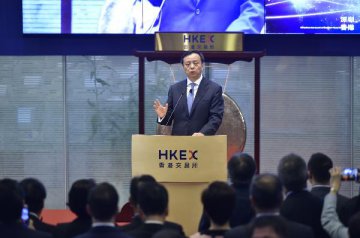
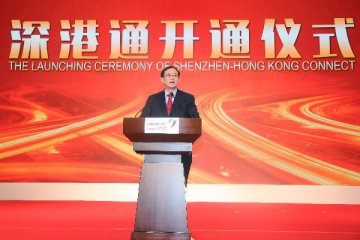

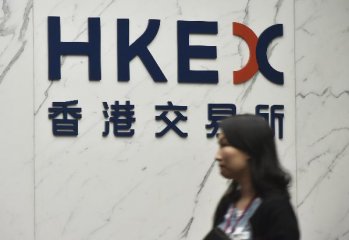
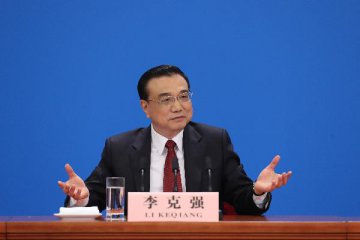
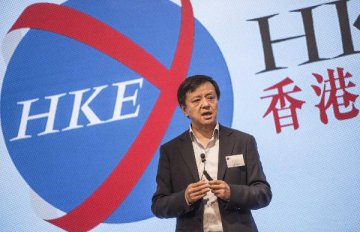


Latest comments